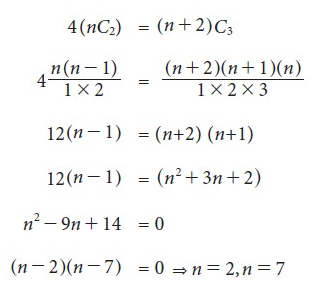Unit-1
Elementary financial mathematics
Q1) Find out the simple interest on 5600 rs. At 12 percent per annum from July 15 to September 26, 2020.
A1)
Here we calculate the time-
Total days from july 15 to sept 26 = 73 days or 73/365 = 1/5 years
And P = 5600, i = 12/100 = 0.12
Simple interest = P.i.n. = 5600 
Hence the simple interest is – 134.40
Q2) Harpreet invests 1200rs. At 10 percent per annum for some time and it becomes 1560 then find the principal when that will become 2232 at 8 percent p.a. in the same time.
A2)
Here in first situation- P = 1200, A = 1560 and i = 0.10
So that,




In second situation-
A = 2232, n = 3, i = 0.08



Q3) A sum of money invested at C.I. payable yearly amounts to 10, 816 rs. at the end of the second year and to 11,248.64 rs. at the end of the third year. Find the rate of interest and the sum.
A3)
Here A1 = 10,816, n = 2, and A2 = 11,248.64, n = 3
We know that
A = P (1 + i)n we get,
10,816 =  … (i)
… (i)
11,248.64 = … (ii)
… (ii)
Here on dividing equation (2) by (1)-

We get-


And

Hence the rate is 4 percent.
Now from first equation-
10,816 = 
Or

Now-

P = antilog 4.000 = 10,000
Therefore the require answer- 10,000
Q4) Ronak deposited Rs. 10,000 in a bank for 3 years. Bank gives two offers either 10 percent compounded quarterly or 8% compounded continuously, then which offer is preferable for Ronak?
A4)
Balance after three years under first offer-

Balance after 3 years under second offer-

So that we can conclude that the first offer is preferable for Ronak.
Q5) Sundar decides to deposit 20,000rs. at the end of each year in a bank which pays 10% p.a. compound interest.
If the installments are allowed to accumulate, what will be the total accumulation at the end of 9 years?
A5)
Suppose A rs. be the total accumulation at the end of 9 years. Then we get-

Here P = 20,000 rs., i = 10/100 = 0.1 and n = 9
Then

Hence the total required accumulation is 2,71,590 rs.
Q6) Rajeev purchased a flat valued at 3,00,000rs. He paid 2, 00,000 rs. At the time of purchase and agreed to pay the balance with interest of 12% per annum compounded half yearly in 20 equal half yearly installments.
If the first installment is paid after six months from the date of purchase, find the amount of each installment.
[Given log 10.6 = 1.0253 and log 31.19 = 1.494]
A6)
Here 2, 00,000 has been paid at the time of purchase when cost of the flat was 3, 00,000, we have to
Consider 20 equated half yearly annuity payment P when 12% is rate of annual interest compounded half
Yearly for present value of 1, 00,000rs.
So that-

Or



Then-

Hence the amount of each installment = 8,718.40
Suppose,

Taking log-

Hence
X = 0.3119
Q7) A man buys a machine for Rs.20,00. What its value be after 6 years, if it is assumed to depreciate at a fixed rate of 12% per annum.
A7)
Here we have P = 20,000, n = 6 and r = -0.12 (rate of interest is negative in depreciation)
Then,

So that the value of the machine in 6 years will be = 9288.08
Q8) Ayesha invests Rs. 3000 initially and then Rs. 1800 at the end of the first, second and third years and finally Rs. 600 at the end of 4th year.
If the interest is paid annually at the rate of 6.5% then find the value of the investment at the end of 5th year.
A8)
Rs. 3000 is invested for 5 years and grows to-

The three sums of Rs. 1800 are invested for 4, 3 and 2 years and grow in total-

And Rs. 600 is invested for 1 year and grows to-

Then the total value at the end of 5 years will be 11,280.81
Q9) if f(x) =  then prove that
then prove that 
A9)
By taking LHS-

Q10) Three cards are chosen one after the other from a 52-card deck. Find the number m of ways
This can be done: (a) with replacement; (b) without replacement.
A10)
(a) Each card can be chosen in 52 ways. Thus m = 52(52)(52) = 140 608.
(b) Here there is no replacement. Thus the first card can be chosen in 52 ways, the second in 51 ways, and the third in 50 ways. So that-
P(52, 3) = 52(51)(50) = 132 600
Q11) There are 4 black, 3 green and 5 red balls. In how many ways can they be arranged in a row?
A11) Total number of balls = 4 black + 3 green + 5 red = 12
The black balls are alike,
The green balls are, and the red balls are alike,
The number of ways in which the balls can be arranged in a row =

Q12) 
A12)
